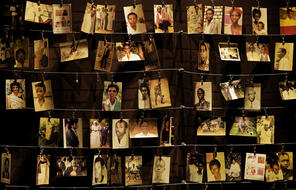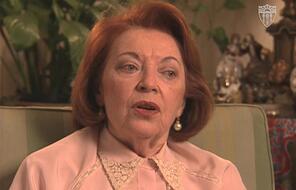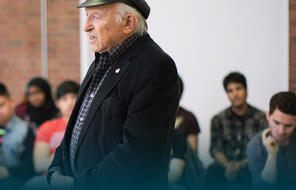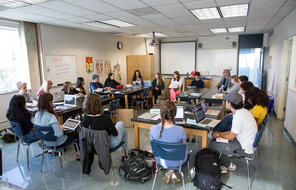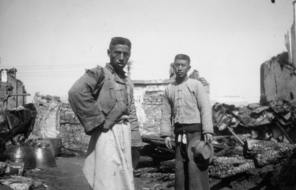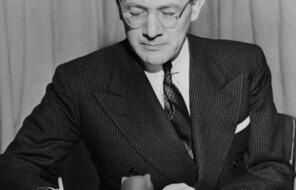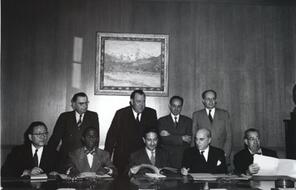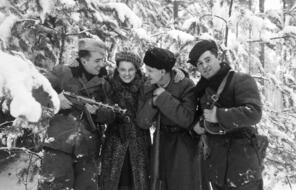Humanitarian Intervention
At a Glance
Language
English — USSubject
- History
- Social Studies
- Genocide
By the mid 1890s the “Armenian Crisis” received prominent coverage in the popular press of the United States. The New York Times, Boston Globe, and San Francisco Examiner featured stories on the situation nearly every week. At the same time, activists around the country began to raise money for food and clothes for distribution through networks set up by Christian missionaries in Ottoman Armenia. Although the missionaries played a prominent role, the movement was not limited by religion or politics. In the United States, Christians, Jews, liberals and conservatives, took up the issue of Armenian relief. 1
Activists lobbied Clara Barton, the American founder of the Red Cross, a national symbol of humanitarian activism, to take up the cause. Impressed by extensive relief efforts in New York and Boston, Barton, who had become a household name for her work during the American Civil War, soon agreed. The 75-year-old humanitarian decided that it was time to take her work to Ottoman Armenia. She explained her decision by saying that “‘immediate action was urged by the American people. Human beings starving could not be reached, hundreds of towns and villages had not been heard from since the fire and swords went over them.” Barton argued that her intervention was justified on the basis that Turkey was one of the signers of the Red Cross Treaty of Geneva, and consequentially it had to be familiar with its humanitarian objectives.
Balakian believes that American intervention on the behalf of the Ottoman Armenians had a profound impact on the way Americans viewed their responsibility to those that lived beyond their borders.
Although the United States sent money...to aid Greece during the Greek War of Independence in 1824-25, and Americans aided Ireland during the potato famine of the 1840s, the movement for humanitarian intervention for the Armenians in Turkey in 1896 commenced what I believe can be called the modern era of American international human rights relief.... In many ways Barton’s mission anticipated the kind of work the Peace Corps would do in the second half of the twentieth century. Barton’s voyage to Turkey was also another part, and a bright one, of America’s growing global involvement during the decade that would bring the United States a new international identity....
In many ways, American women played a crucial role in the movement for Armenian relief, and their work helped to give shape to a new vision of what might be called global sisterhood. As survivor accounts and eyewitness reports came to public knowledge through the press, the magnitude of sexual violence committed against Armenian women—rape and sexual torture, abduction, slavery, and imprisonment in harems—appeared to be unprecedented in modern Western history, and it affected Americans deeply. 2
The activism of American women did not take place in a vacuum. The treatment of minorities in the Ottoman Empire galvanized a growing international movement for humanitarian intervention—a belief that states, not just individuals and groups, have a responsibility to take action, using diplomacy or force, to prevent or end the abuse of human rights in a separate sovereign nation. Human rights expert Paul Gordon Lauren writes that efforts to intervene in the name of persecuted Ottoman minorities during the nineteenth century “contributed heavily to the growing theory of humanitarian intervention and its slow but steady acceptance as an increasingly important component of international law.” In practice, Lauren explains, those efforts raised many questions about the tension between human rights, politics, and national sovereignty—questions that are still with us.
Humanitarian intervention both in theory and practice also helped to identify serious and troubling problems created when trying to transform visions of international human rights into reality. Even at this early stage, for example, it became evident that humanitarian intervention in the name of “humanity” might well be genuinely beneficent and justified, but at the same time always carried the dangerous potential of providing a convenient pretext for coercion or a guise for masking more suspicious motives of national self-interest and aggrandizement. Similarly, difficulties arose as to precisely what nations or group of nations could legitimately or precisely define the “laws of humanity,” “the conscience of mankind,” and the meaning of “human rights” for the world as a whole while still avoiding accusations of having arbitrary standards that applied to some but not all. The Great Powers who demonstrated such eagerness to protect the rights of the persecuted in the Ottoman Empire, for example, also happened to be the same ones known to persecute and discriminate against indigenous peoples within their own overseas empires. In addition, whereas carefully negotiated and solemn treaty provisions concerning human rights indicated a strength of desire, the lack of enforcement provisions revealed a lack of will.... Humanitarian intervention always carried the risk that it could provoke even worse reactions against the very people that it wanted to protect. Even more serious in terms of international relations, such intervention could create the risk of a dangerous precedent that might be turned against those who employed it and thus threaten their own independence, domestic jurisdiction, territorial integrity, and national sovereignty. Each of these difficult problems would continue to confront those who struggled to advance international human rights for many years to come. 3
Connection Questions
- Balakian writes: “Looking back at the twentieth century, it seems clear that no international human rights movement ever obsessed or galvanized the United States as did the effort to save the Armenians.” As you read about the treatment of Armenians in the Ottoman Empire, what grabs your attention? What does it take for another group of people to become part of your “universe of obligation”? How do you express your concern?
- Paul Gordon Lauren highlights a series of dilemmas for those acting in the name of “humanity.” He notes, “it became evident that humanitarian intervention in the name of ‘humanity’ might well be genuinely beneficent and justified, but at the same time always carried the dangerous potential of providing a convenient pretext for coercion or a guise for masking more suspicious motives of national self-interest and aggrandizement. Similarly, difficulties arose as to precisely what nations or group of nations could legitimately or precisely define the ‘laws of humanity,’ ‘the conscience of mankind,’ and the meaning of ‘human rights’ for the world as a whole while still avoiding accusations of having arbitrary standards that applied to some but not all.” How can those dilemmas be resolved? Do the tensions need to be resolved before any action is taken?
- Does the international community have a moral duty to intervene when human rights are being violated? If so, what standards should be used to determine when to act? How should nations determine when to respond diplomatically and when to use force?
- What human rights stories are in the news today? What obstacles need to be negotiated as individuals, groups, and nations respond?
- Lauren warns that intervention may provoke unexpected consequences: “Humanitarian intervention always carried the risk that it could provoke even worse reactions against the very people that it wanted to protect.” How can those that plan humanitarian actions minimize the risk of a backlash?


